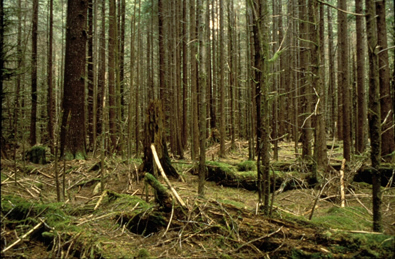| During early stand development,
coniferous forests of the coastal Pacific Northwest commonly pass through
a period of dense shade and intense competition during which the abundance
and diversity of understory plants decline dramatically. In young, managed forests, silvicultural thinning
has been proposed to enhance the structural and floristic diversity
of the understory. Although
germination of buried seeds is likely to be stimulated by thinning,
we know little about the composition of the soil seed bank in these
forests. We employed the greenhouse emergence method to assess the potential
contribution of the seed bank to understory reinitiation in 40- to 60-yr-old,
closed-canopy forests on the Olympic Peninsula, Washington. Seed banks were well-developed (610-7009 germinants
per sq. m), containing 46 native and exotic species representing a diversity
of life forms. However, many
common forest understory species were absent; only 11 species were typical
understory plants and these comprised <10% of all germinants.
In contrast, 30% of all species and 50% of all germinants were
exotic, ruderal forbs. Wind-dispersed annuals and perennials dominated
litter samples whereas ruderal forbs and graminoids with limited dispersal
dominated soil samples. Our
results suggest that silvicultural thinning will enhance the establishment
of ruderal, exotic species, but will contribute little to the regeneration
from buried seed of the vast majority of forest understory plants. |



